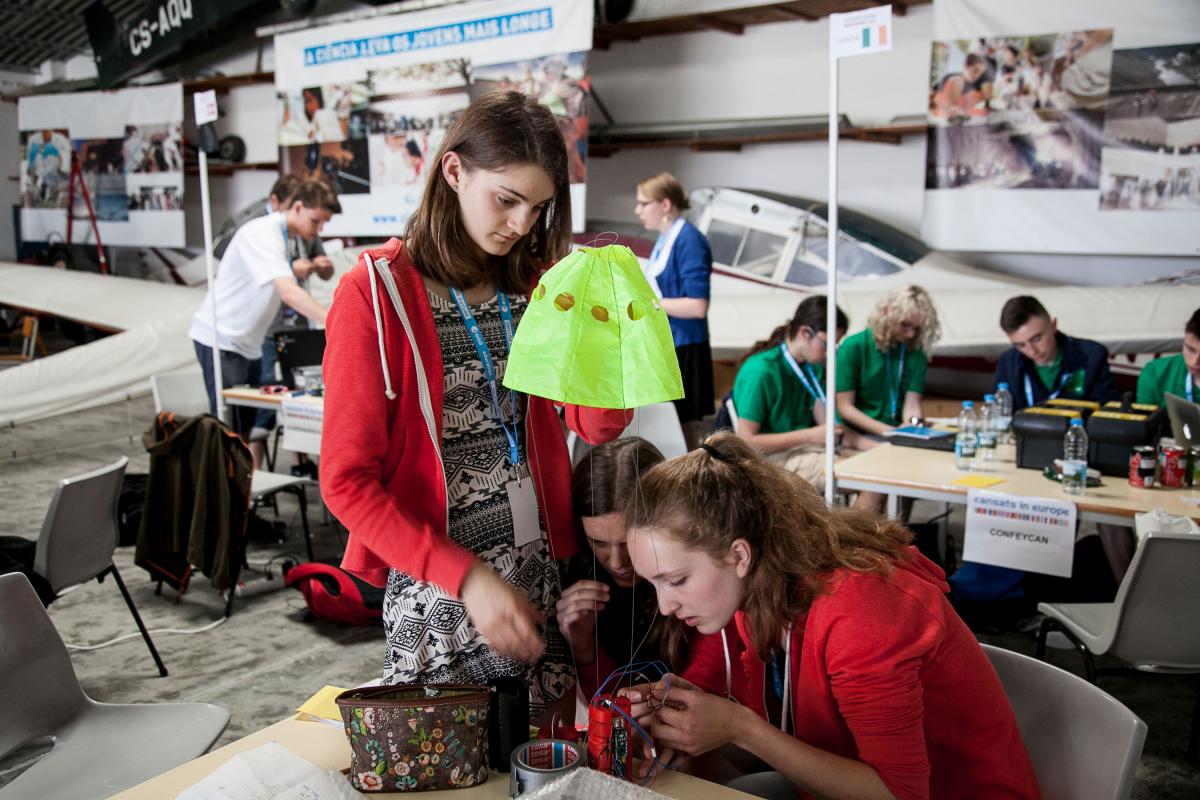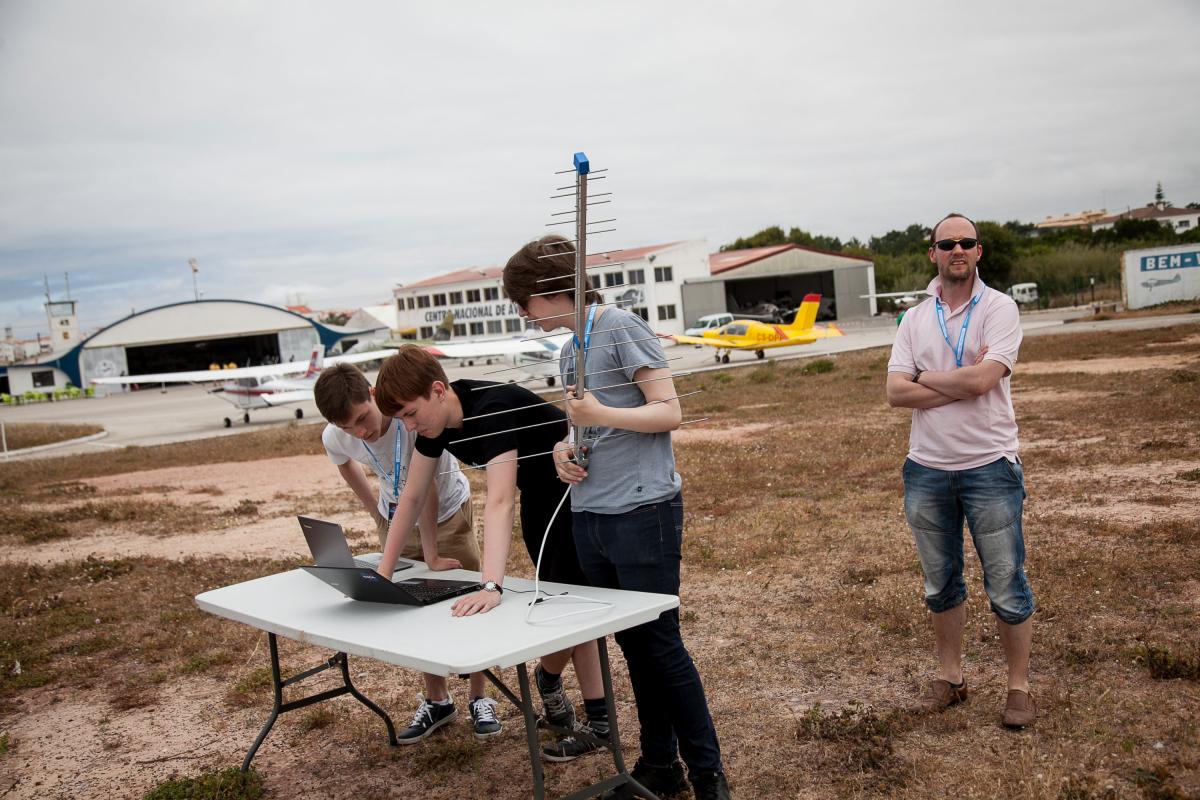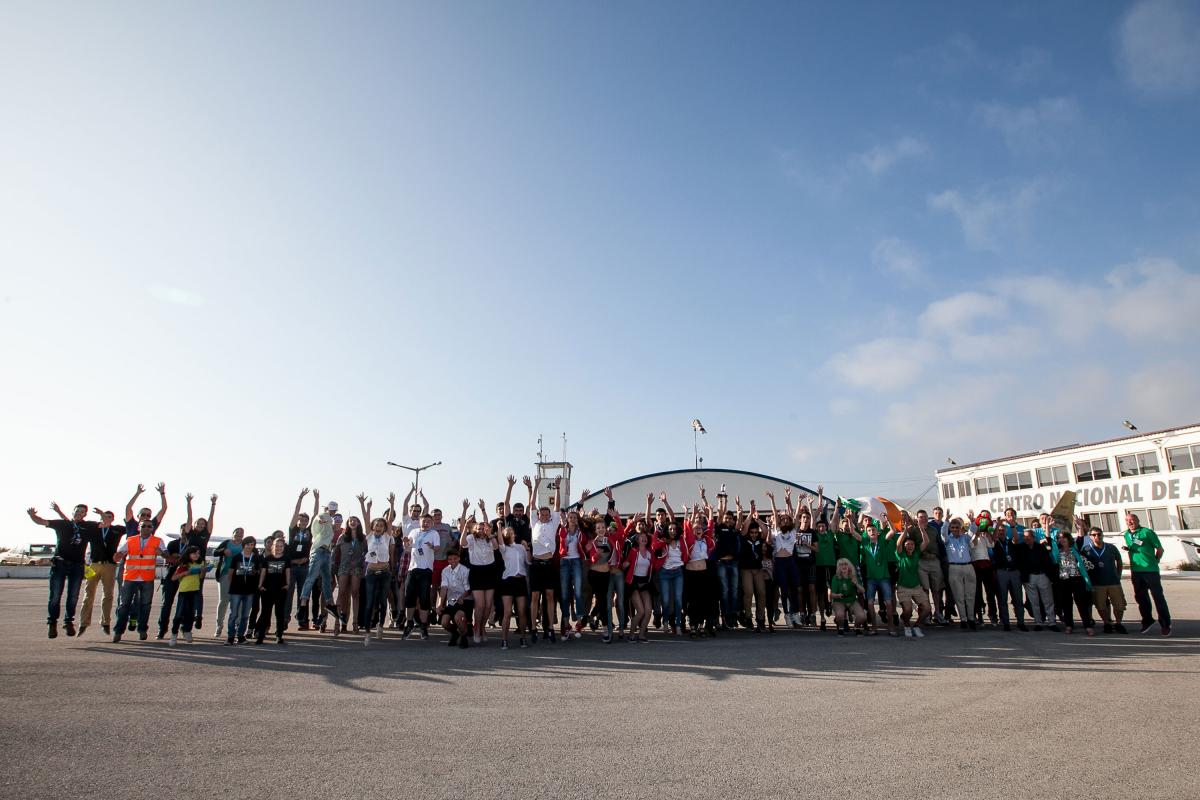European CanSat Competition 2016 Inspire article
This June, students from around Europe met in Portugal to compete in the European CanSat competition. One of their teachers tells us more.
When I first told my students about the European Space Agency (ESA) CanSat competitionw1 and asked if anyone might be interested, they were eager and hesitant at the same time. A CanSat is a working model of a real satellite that is fitted in a standard 330 millilitre soda can. CanSats do not go into space, but instead are released from a rocket or a balloon at an altitude of about 1 kilometre. According to the rules of the competition, it should contain an on-board computer, sensors for different measurements, and a radio transmitter to communicate with a ground station.
So while my students at Vasa Övningsskola in Finland thought it sounded exciting, some were concerned that the competition would be too complicated for them, as they hadn’t really studied any electronics or programming. But one group decided to go ahead anyway, learning all the necessary skills along the way – and they found themselves in Portugal for the 2016 European finals on 22-25 June. As my students discovered, it is surprisingly simple to get started and build a functioning CanSat – but enormously complicated to build something one hopes will be the best in Europe.

Copyright ESA
The 2016 final hosted 14 teams from across Europe. Most of the teams had made it to Portugal by winning a national competition, although a few teams from countries without an active CanSat community were also selected to take part. Each team consisted of four to six students and at least one accompanying teacher, so in total almost 100 ‘space geeks’ filled the hangars at Torres Vedras airfield near Lisbon during the competition.
My team’s table in the hangar was buzzing with activity for the first two days of the competition. Persistent problems with our GPS unit meant the students soldered and re-soldered connector after connector in a last-minute frenzy, hoping to identify the problem and find a reliable GPS fix. On the first day, the students ran out of spare parts, but with the help of several other teams they found a working combination of chips and antennas. By the end of the second day, the friendly little green LED on the GPS chip finally started blinking to indicate an acquired satellite fix.

of the author
Copyright ESA
As a teacher, this exemplifies what I think makes the European CanSat Competition a fantastic experience. The students worked through the night, if needed, to solve seemingly impossible problems, before finally succeeding. And students from different countries, but with the same passion for science and technology, got to know each other, learn from each other and help each other throughout the competition.
During the second day of the competition, the judges inspected the technical aspects of the cans and parachutes. Then drop tests were carried out from an aeroplane to ensure the cans could be safely loaded into the rockets and fired up to a height of about one kilometre.
The third day was launch day, but as with real rocket launches, the weather caused several delays. In the end, only five of the planned seven rockets could be safely fired, and some CanSats had to be dropped from a plane at lower altitude instead. A short night followed, with all the teams working hard on data analysis to prepare their final presentations for the following morning.

Copyright ESA
Listening to these presentations, I was amazed at the high standard of every project. Ultimately, the Portuguese team were crowned the CanSat 2016 winners, followed by Germany and Ireland. There is no doubt, however, that every participating team had worked hard for months to prepare their missions and had learned so much in the process, and they all presented fantastic results. This, I think, makes every team a winner!
About CanSat
- CanSat started in the 1990s in the United States and Japan as a way of increasing interest in space research among university students.
- The European CanSat Competition targets secondary school students and has been organised by the Education Office at the European Space Agency since 2010, although several European countries have worked with CanSats at a national level for even longer.
- The best way to get involved in CanSat is to enter a national competition, usually organised by local European Space Education Resource Office (ESERO) partners (see the CanSat website for a list of national competitions).
- The same organisations also hold workshops for teachers interested in starting a CanSat project.
Web References
- w1 – For more information on the CanSat competition, visit the website or Facebook page:





